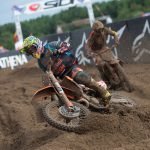In 2015 Romain Febvre won the FIM MXGP World Championship in his first year in the category. The Frenchman was ejected from MX2 – where he finished 3rd overall in 2014 with just one GP win to his name – by virtue of his 23rd birthday on December 31st. He missed what would have been a sure-fire year of 250 title contention by a mere few hours. It didn’t turn out too badly though. Febvre started the 2015 calendar year with a broken arm. He clocked up miles on the Yamaha – his first Japanese mount after seasons of KTM and Husqvarna representation – by using a stock YZ450F. By late summer he was the second rookie #1 in the modern era of the premier class (Tony Cairoli won at the first attempt in 2009).
A year later Tim Gajser entered MXGP as a 20-year old and MX2 world champion after Jeffrey Herlings had dislocated his hip and offered control of the division. The Slovenian followed Febvre’s example and inadvertently put pressure on Herlings for 2017. The Dutchman dealt with a broken right hand in the first few races and underestimation of the challenge on the Red Bull KTM but won five of the last six races and then slaughtered MXGP in 2018.
Steven Frossard, Jeremy Van Horebeek, Gautier Paulin, Steve Ramon, Max Nagl, Pauls Jonass: more riders that caught the eye and achieved success thanks to more ‘cc’s.
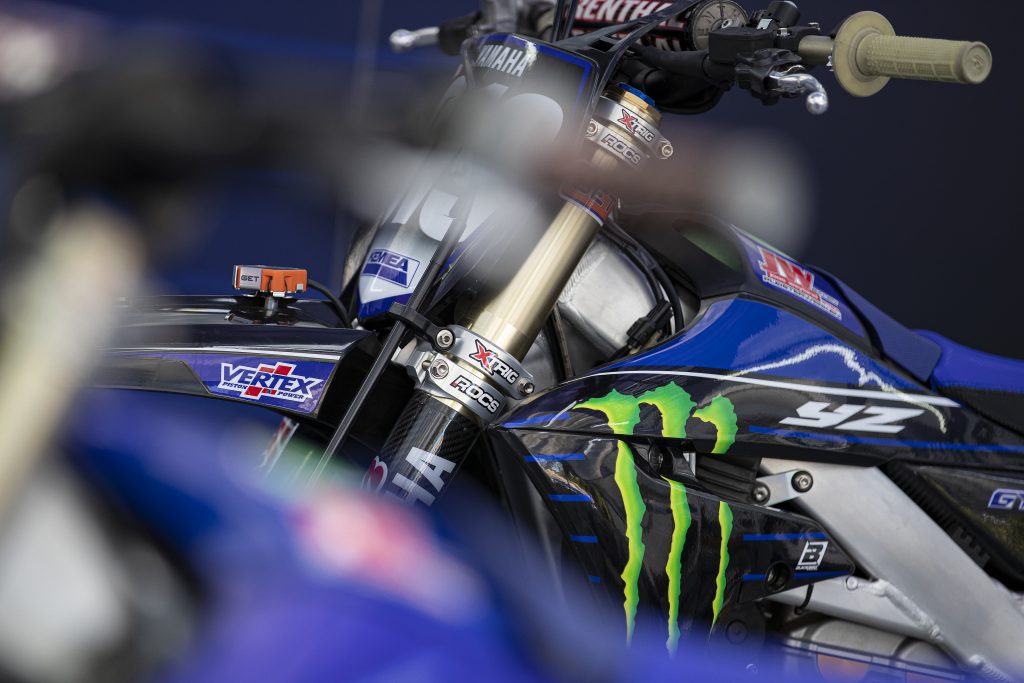
“A different power, different inertia and different energy: when riders really understand how to use the power of a 450 then they are coming good,” assesses France’s first world champion and now long-term rider coach Jacky Vimond, who has been working with Romain Febvre (and Ben Watson in the past) for the last two years. “Herlings is an example; in the first year he didn’t have the gearing right and was over-revving a lot. He is a big guy and jumped on a bigger bike but it took him half a year to learn to ride the 450. It’s strange but it’s like this.

“Take Frossard [#193 finished as MX1 runner-up in 2011],” he adds. “When you saw him riding the 250 you think ‘this guy will not finish the season on a 450’! Everybody said the same thing. But he finished 2nd. A big surprise. How did that happen? One explanation is that – as a 250 rider – you need to push the bike so hard. Then, the riders adapt. They are not stupid. They know that the 250 style will not work. Romain had more control and did the job better because he won the title. Van Horebeek did well also [a career high of 2nd in his second term]. They did not have to push as much with the bigger bike and kept part of that 250 speed. If you are ready physically and mentally, and you make the move to the 450 at the right time, you can make that result.”
MXGP ebbs and flows with talent filtering up from MX2. 2020 saw Calvin Vlaanderen, Mitch Evans, Thomas Covington, Henry Jacobi, Michele Cervellin and Adam Sterry all trying to find their feet. These names alone have graced MX2 podium trophies and EMX250 race wins. Although the campaign was dwarfed by the demands of a surrounding pandemic and only visited six countries, injuries struck each rider, with Covington deciding to end his career after health and motivation issues.
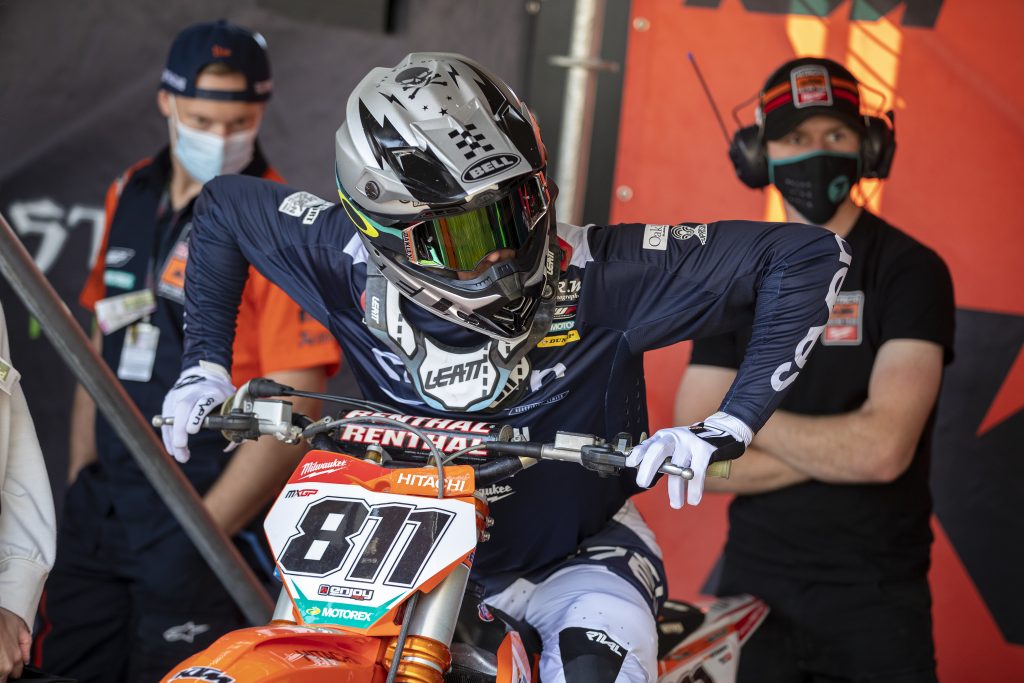
“It was way-harder than I thought,” Sterry admits. “Most people just think ‘a 450’s the same but with more power’. You spend all your time in MX2 trying to make the 250 as fast as possible and looking everywhere to get more speed and power. You’ll be hanging off the back of the bike in the starts and out of corners and using the clutch to get more power out of the bike. On a 450 it’s all the opposite! You need to change your style and technique and the way you think the bike will behave. You use the clutch on a 450 much more but to tame to power and to use it, rather than trying to maximise it. It was hard to change. I jumped on Conrad’s [Mewse, MX2 riding teammate] bike a few weeks ago because the team wanted an opinion and it felt like you couldn’t crash with it! On a 450, with the weight characteristic and the behaviour, it feels like a lot more can go wrong.”
The Brit had to deal with a mid-season team switch and a punctured lung but was touching the fringe of the top ten by the end of the year.
Sterry’s friend and former foil Monster Energy Yamaha’s Ben Watson is one of two major incoming racers for 2021. The 23-year old was the in-form racer towards the finale of the 2020 MX2 competition – much like his training partner Febvre was in 2014. His fellow ‘freshman’ is Rockstar Energy IceOne Husqvarna’s Thomas Kjer Olsen, a rider that finished in the top three of four of his MX2 seasons….

What’s your theory on why some riders do well straight away when they move to MXGP?
Olsen: It’s hard to say but, for all the similarities between the bikes, the 450 is definitely a different beast and needs a different riding style so it can suit some guys better than others. I think coming straight from the MX2 class you can bring some of that aggressive riding style that can sometimes help on the 450 too. I think some guys can get a bit lazy on the 450 – if I’m honest. On the 250 you have to be aggressive and work the bike all the time. It’s hard to find a clear answer because you also see people coming up to the 450s and struggling in their first year.
Watson: I think there are a few things that can affect that. In my case I came into a factory MX2 team and in my first year with no pressure and nobody really looking at me I finished 4th straightaway, which was quite a big surprise for everybody. I was a bit lighter, not so experienced and nobody was looking at me; I just got the job done and when I think back now I really, really enjoyed that year. After that I put too much pressure on myself to achieve and tried too hard and was making stupid mistakes. When guys move up from MX2 to MXGP I think not much expected of them and they can put more fun into it without too much stress over the results. Speaking about Romain in 2015, he was really ‘free’ that year and just rode his bike like he knows he can. Herlings was more of an exception because he knows what it’s like to be dominant and probably expected that from himself, perhaps that was his problem in his first season. Everyone is different in how they reaction to situations. For me, I know I can fight for wins but it might not come until the second year. In 2020 I learned to be freer with pressure.

Do you think there will be much difference in terms of lines and intensity when it comes to racing the 450? Some other riders in the past have talked about the diversity…
Olsen: I think it is still really intense but you have to handle the bike a bit differently. You have to ride the bike smoothly and if you start getting too aggressive then you’ll just go backwards. It’s true that you use different lines, especially on a track where the 450s can get away with a bit more. On a 250 you need to keep the speed up all the time whereas the 450 is a bit easier to stop and go. But in the end the 450 is still a bike and I’ve been practicing a lot with one and also testing.
Watson: I’m trying really hard to keep everything moving on a 250 and I don’t think it is as important to do that on a 450. You can try different things like going tighter into a corner and then the power and acceleration of the bike will help. It’s there straight away. I notice on the 250 – especially with sand – if I go too deep into a corner and I’m not ‘light’ on the bike then I lose so much speed and time. It will be strange to know I can take corners in different ways. I think I will figure out a lot in the tests.
It seems that plenty of MX2 racers train with the 450…
Olsen: I’m a tall guy and heavier than my competition. I’ll ride with the 450 at home and then come back to the 250 race bike – which is an amazing machine – but the reality is that it can feel kinda slow compared to the bigger bike. On the 250 you are using all the power you can get but on the 450 you can play around more with the engine packages, and you don’t want to have too much.
Watson: Normally I ride in November each year with a 450 just to build a bit of strength and have a bit of fun on the bike in the first months when it’s not really important to be high intensity and focusing on race speed.
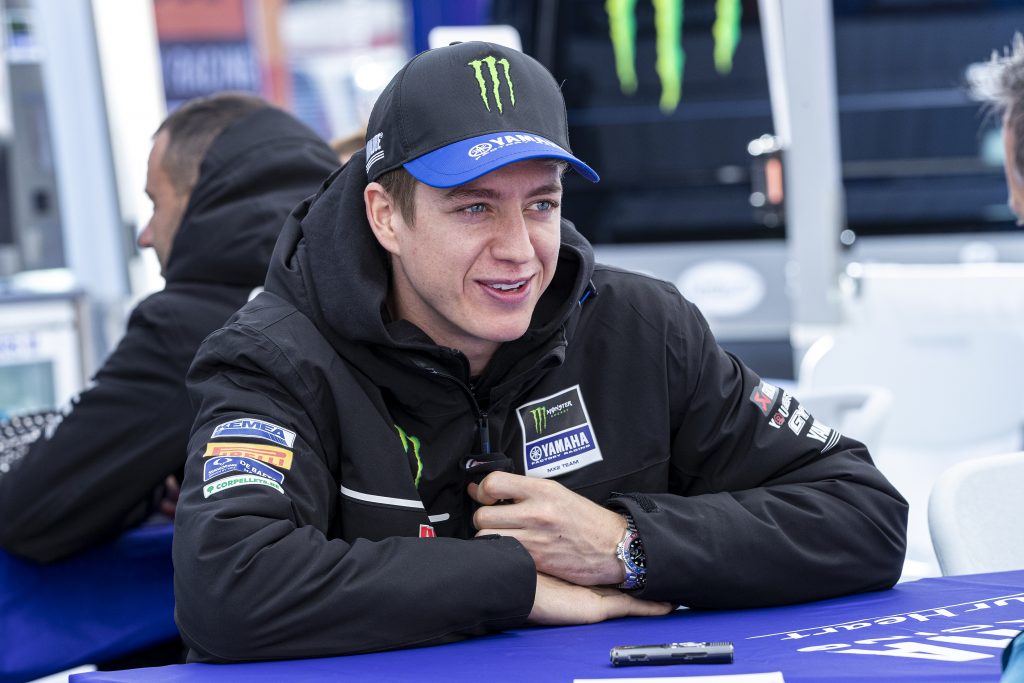
The bikes almost weigh the same. So how do you explain the physical difference of racing it?
Olsen: It’s about the power that’s available, getting the bike stopped and the rotating mass of the engine that makes it feel heavier. I would say that riding the 250 in the sand was actually physically harder for me. I had to hang off the back of the bike and move around it a whole lot more, whereas on the other bike I can rely on the power more and sit centred. It is easier on my arms. I can handle the power OK and that meant flowing with the bike a bit more rather than just hanging it out all the time.
Watson: The acceleration is harder. It means more exit speed and more strength is needed. There might not be a big difference in weight but the engine characteristic means much more pull and force. If you do a 20 minute moto at an easy pace on a 250 and then a sprint lap then the sprint lap might be 1-2 seconds quicker but physically it is much more intense and your heartrate might be 20-30 beats per minute higher on a one lap. That’s how it is with a 450. The exit speed means you are quicker and focussing more. You have to think about that next step a bit quicker. A stronger engine means a stronger physique and a stronger mind. You can only go so fast down a straight before you have to brake for a turn but it’s more the acceleration and the power needed to hold the line. You need strength not to fight the bike and to have control.
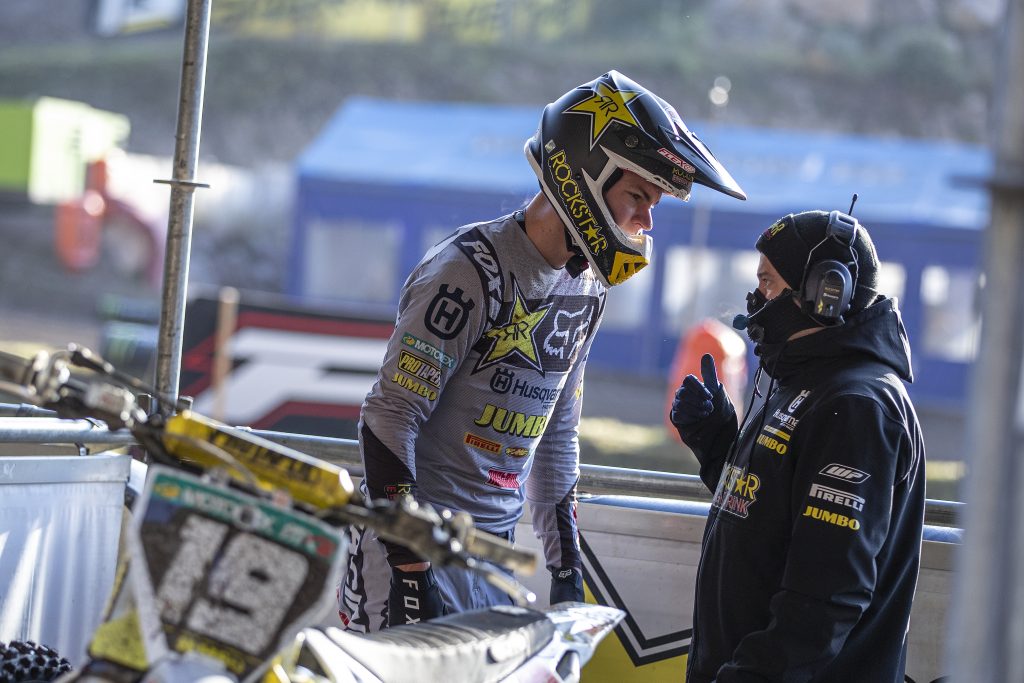
Do you think your set-up will be much different compared to the 250? Will it be more technical?
Olsen: More technical if I’m honest. There is the engine technical package to sort out whereas on the 250 I don’t worry about that side of it too much: the guys give me the most powerful engine possible! On the 450 I’ll have to choose how I want it to be. I think if you don’t sort out the suspension on the 450 then you’ll be punished more than you would on a 250. The Husky is a high-revving bike and when I first got on the factory 450 I couldn’t ride it right! I think I’m quite good at maintaining a lot of power with the throttle but I still like all that torque at the bottom.
Watson: The sensitivity of the throttle is higher. With the 250 we worked on everything to gain power: as much as we could get. I had a really good chassis but I always wanted more power. I think with the 450 next year it will be heavily focussed on putting the power where I want it and learning more about electronics. At the moment I cannot be too precise. I have only ridden a production 450 so I’ll need to see where I want more and where I want less. I don’t think the chassis and the handling will be too much of a worry comparatively. I’m not an aggressive rider. I like to be one gear higher and just roll the throttle. Some guys on the 250 like to go down two gears into a corner and then be on the clutch and get aggressive. I don’t like that and it’s why I didn’t race a 125. I did a couple of days with one when I moved from am 85 and decided to go straight to a 250. I didn’t regret it, but Jacky reckons I missed out learning shifting, aggression and throttle control with the 125…but that’s just the way I ride the bike and the way I’ve always been. That’s why some believe I’ll be better on the 450 because I’m smooth with the bike; I’m not clutching too much or revving it high. I’ll need smooth power, nothing too snappy.
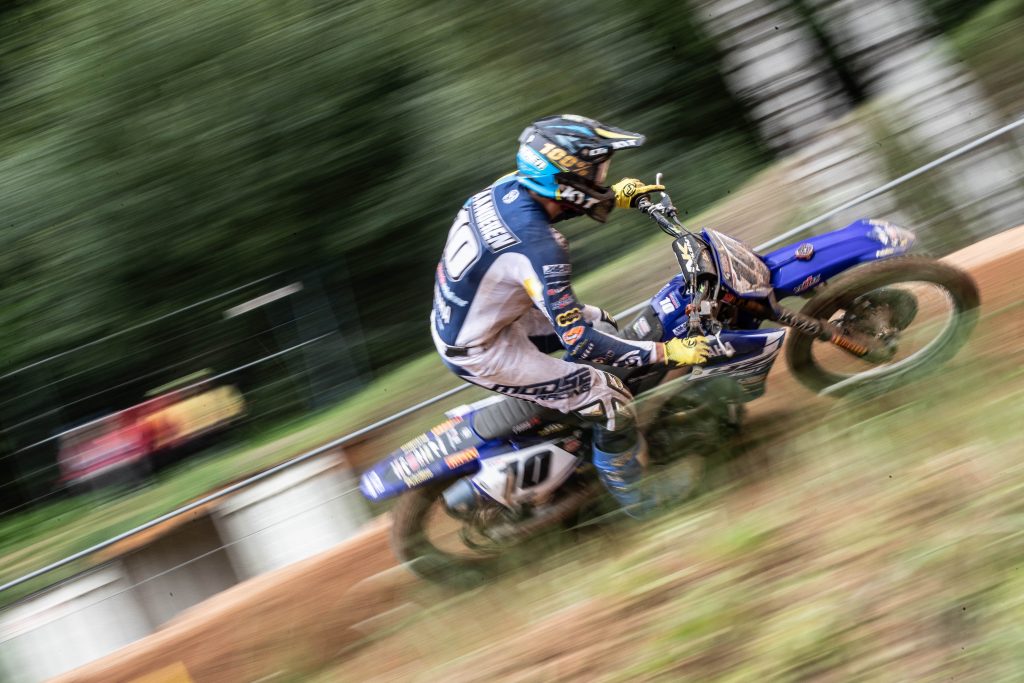
Acclimatisation. Vimond identified this factor and Sterry tried to wade through it in 2020 with a 450 SX-F at his old team and then the same bike in the Hitachi KTM fuelled by Milwaukee squad.
“At the moment, when I’m racing it is hard not to ride the bike like a 250 sometimes,” he admits. “If you have the power in the wrong places then you end up with arm-pump, getting tired and crashing. It was hard to eliminate all of that in my first year.”
“The riders with good understanding and experience of racing a 250 and show quick adaptation to the power of the 450 become good very fast,” Vimond believes. “The lines could be a bit different…but the guys now are starting to use those flat-out wide lines in corners that were possible on a 250 and even more so on a 125. Look at Gajser: he can make the outside line really fast. It takes more energy…but he can do it.”
Rather than the unusual stories of a rider excelling with his first dance with the 450 there is another issue that perplexes Vimond and brings the subject of psychology into the equation.
“The bigger question for me is why can’t strong riders on a 250 – who have done well immediately with the 450 – do it again the second year?” he ponders. “Jeremy Seewer, and Van Horebeek also, seem to be the exception. Seewer learnt in his first year and then went to 2nd place in his second season. He is still there now. It must be about the mentality and the routine of working with the 450. There is a new energy in the first year, then they learn more in the second year and they are maturing in the third. It’s strange.”
Pressure, expectations and peers rather than just weight, lines and physique shouldn’t be understated. “For sure MXGP is something to get used to,” smiles Olsen “but hopefully I’m up there battling those guys. Maybe the first glimpse of them will hit me a little bit. But every time I’ve stepped up a new class I’ve adapted quickly. I was also looking up to the riders in MX2 but as soon as it came to racing them in 2017 then I didn’t care. I respect all of them but we’re racing…and if I can see that I’m faster than some then I’m coming past.”
“Resetting my expectations will be fine for the first year but I’m racing in the world championship and that means the best and the fastest, it doesn’t matter if it’s the 250 or the 450,” reasons Watson. “I’ve raced with all of these guys before in MX2 and at the Nations, I’ve competed against Herlings and Gajser, so it doesn’t bother me who I’m up against, in fact it will give me more motivation. At the moment I’m nothing to those guys…so it will be cool to get in the mix. It’s exciting because I don’t know what to expect. I could surprise myself and I could surprise others.”
By Adam Wheeler @ontrackoffroad
Photos by Ray Archer @rayarcherphoto



